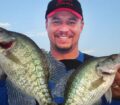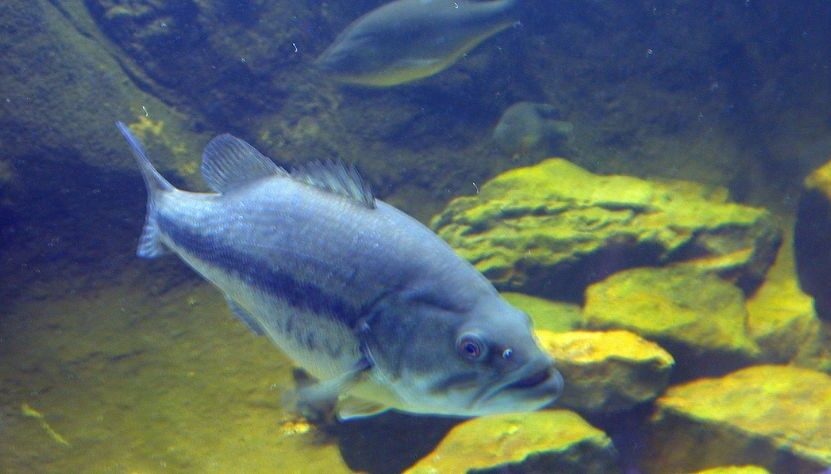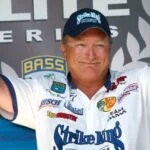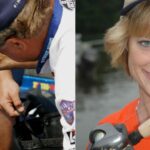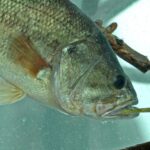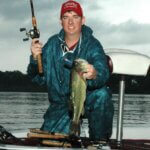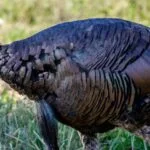Editor’s Note: Denny Brauer, originally of Camdenton, Missouri, and today a resident of Del Rio, Texas, on Lake Amistad in southern Texas, is one of the most successful tournament bass fishermen ever. He’s earned over $2.5 million in tournament winnings and has won a Bassmaster Classic, the title of Bass Angler of the Year, the title of FLW Angler of the Year, and featured on the Wheaties cereal box. Brauer is known as one of the best flippers ever. “I flip because I want to fish spots most bass fishermen won’t fish,” Brauer says. “I fish to win every tournament I enter, and fishing thick cover with big baits gives me the greatest odds to catch big bass and win tournaments.” But Brauer also flips tubes, creature baits, and many other lures to catch bass. This week, we’ll learn how Brauer chooses which lures to fish when.
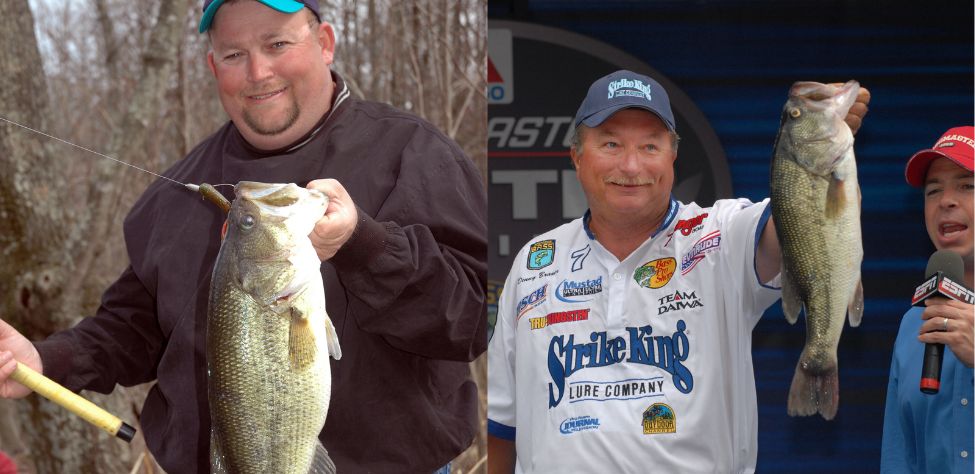
Question: Denny, Strike King has two giant worms, including the Rage Anaconda, a big fat worm in 10-inch and 7-inch lengths with a lot of action. Strike King also has another big plastic worm, the 10-inch Rage Thumper Worm, with a lot of action. So, why and how do I pick one of these worms over the other?
Brauer: These two worms give off a different water vibration pattern. For instance, the Rage Anaconda is what I call a slither worm. It offers a big profile in the water, but it slides more or less through the water without giving off a lot of pressure waves. This makes the Rage Anaconda a great clear-water and deadly summertime worm.
The Thumper Worm is a better dirty-water worm than the Anaconda. If I’m flipping tree tops in stained water, the vibrations produced by the Thumper Worm make it easier for the bass to find this worm in dirty water than the Anaconda. Also, if you’re fishing a body of water that receives a lot of fishing pressure, any time you can offer the bass a bait they’re not accustomed to seeing or haven’t seen before, you need to do it. Anytime I can use a worm I think the bass haven’t seen before or that gives off pressure waves the bass haven’t felt before, I’ll use that worm.
Too, most manufacturers make their lures, so they should only be fished at a particular size. But the Thumper Worm is segmented, so if you want to use a Thumper Worm as an 8-inch worm instead of a 10-inch worm, you simply cut off the first 2 inches of that 10-inch worm. Then you have a Thumper Worm that will perform just as well at 8 inches as it did at 10 inches. If you want a 5-inch flipping worm, that’s one of the best-flipping worms you can fish. Cut the Thumper Worm in half, and fish with the bottom end of the worm with the goofy tail. This worm was designed so that at whatever length you cut it, you still get the action the Thumper Worm has been designed to deliver.
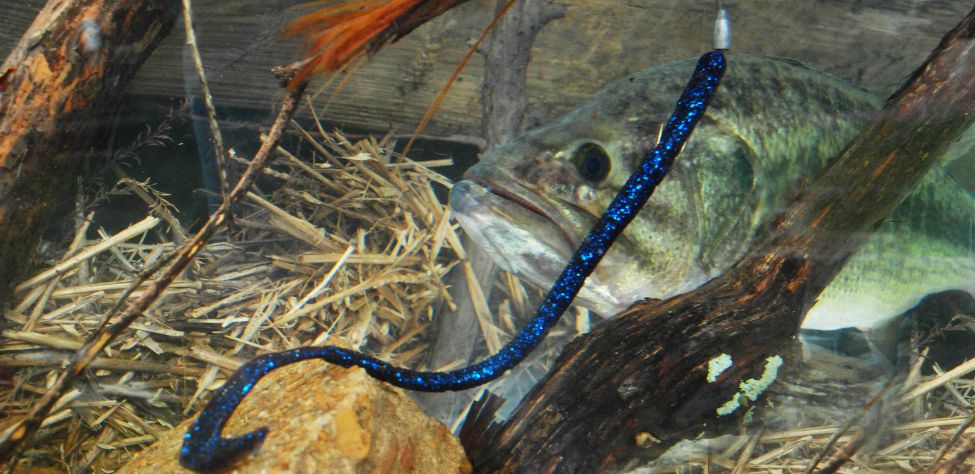
Both the Thumper Worm and the Anaconda are great tools for catching bass, and when I go fishing, I don’t carry one of them and not the other. I take both styles of 10-inch worms. Even though you may think the place you’re fishing is best suited for the Anaconda because the water’s clear and warm, the bass may decide they want the Thumper Worm that day instead of the Anaconda. So, for this reason, I make sure I have any type of lure the bass may want to order that day.
Another reason for carrying two giant worms is that bass don’t have big brains but can become educated. If you catch two or three bass out of a school of bass on the Anaconda, and the bass stops biting the Anaconda, then pitch the Thumper Worm to the bass. You’re presenting a different-looking worm with a different action. You can often get the bass to begin biting again and catch a few more bass in that school that may cause you to win a tournament.
Question: If you can only take two plastic worms in your boat to fish anytime and anywhere, what two colors would you take?
Brauer: Green pumpkin and plum.
Looking for more content? Check out our YouTube channel and watch “In High Water, Downsize Your Line and Bait to Catch More Bass” with Brian Barton” by John E. Phillips.
Expert Guidebooks on Bass Fishing: Best Sellers

If you want to become the best you can be, find someone who’s already become the best at what you want to do and follow his or her instructions. This is what I’ve done in my new book, Bass Pros’ Season by Season Tactics.
In this book, I’ve chosen some of the best bass fishermen to give you advice on how to find and catch bass during each period of a bass fish’s life, including professionals like Kevin VanDam, Denny Brauer, David Fritts, Rick Clunn, Larry Nixon, George Cochran, Mark Davis, Woo Daves, Gary Klein, Davy Hite, Michael Iaconelli, Skeet Reese, Mark Rose, and Shaw Grigsby.
My hope is that this book will help you find and catch more bass at every time of the year and each day you’re on the water. The men included in this book are some of the best mentors I know of for successful bass fishing anywhere in the nation.
VERSIONS: AUDIBLE & PRINT
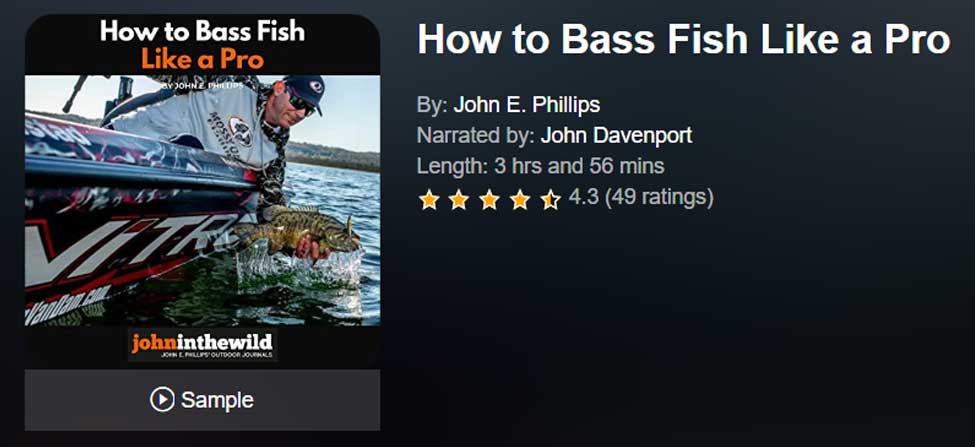
How to Bass Fish Like a Pro
If you could sit down and interview some of the best pro bass fishermen in the world, what would you want them to tell you to help you improve your bass fishing skills?
In this book, How to Bass Fish Like a Pro, Kevin VanDam explains how he catches bass consistently, and how he fishes all 12 months of the year. In the bonus chapters, he will tell you how to fish for hot-weather bass.
Denny Brauer will tell you the ways he hates to fish, how he picks the best fishing lures for different water and weather conditions, and will give you his best fishing tips for hot weather. In Brauer’s bonus chapters, he’ll teach you when to flip a jig, a tube, or a creature bait and tell you his three tips for how to be a better fisherman.
Mark Davis, in Chapter 3 of the book, explains his five secrets to becoming a better bass fisherman, how to turn your bass fishing around to the positive side, and how to catch hot-weather bass. In the bonus chapter, you’ll get six different interviews with Davis, where he tells you: three tips for becoming a better bass fisherman; his three favorite bass lures; and how to keep a big bass on the line and get it to the boat.
James Niggemeyer tells you how to become a bass pro. He also tells you how to catch bass when the weather sizzles. In Niggemeyer’s bonus chapter, he explains how to move from being a bass-club fisherman up to being a pro.
Mark Rose will explain his five favorite go-to bass lures, and how to catch bass in the middle of the summer.
In this book, you’ll hear from top-performing pro fishermen about how they catch big bass consistently, and what they do to win millions of dollars as professional bass fishermen.
VERSIONS: AUDIBLE, KINDLE & PRINT
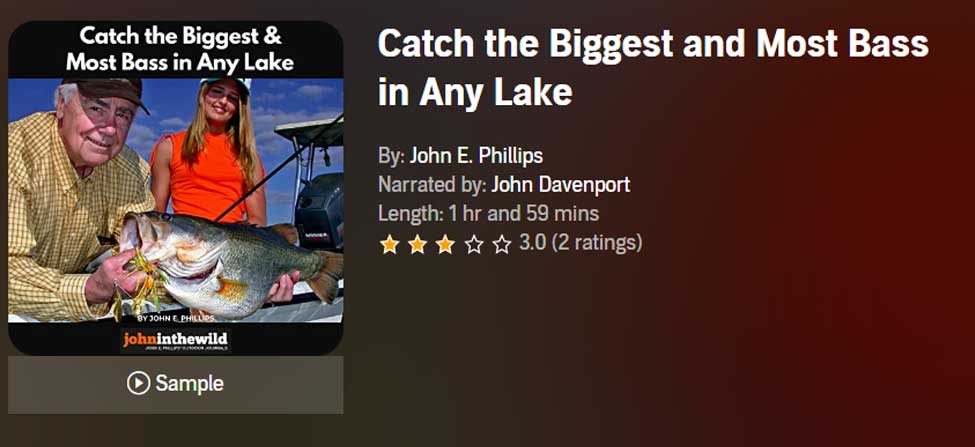
Catch the Biggest and Most Bass in Any Lake
If you were having open-heart surgery at the hospital, you’d want the best doctor with the most experience and the latest equipment and techniques that money could buy to do your operation. You’d study these doctors’ credentials to learn who was the best.
This is the same type of research that author John E. Phillips has done with the best bass fishermen in the nation to solve the problem of how to find and catch the biggest and the most bass in any body of water that he fishes.
This is the same type of research that author John E. Phillips has done with the best bass fishermen in the nation to solve the problem of how to find and catch the biggest and the most bass in any body of water that he fishes.
In this book, you’ll hear about the techniques, tips, baits, lures, and tackle that 18 of the nation’s best professional fishermen use to support their families by winning bass tournaments and catching the most and the biggest bass they can in every tournament they fish.
Most of these anglers are Bassmaster Classic winners, Megabucks winners, Angler-of-the-Year and FLW Tour winners – like Rick Clunn, Kevin VanDam, George Cochran, Mark Davis, Paul Elias, Skeet Reese, Larry Nixon, Hank Parker, Ken Cook, Denny Brauer, Alton Jones, and Jay Yelas.
Also, every serious bass fisherman should know Timmy Horton, Mark Rose, Randy Dearman, Harold Allen, Mike Wurm, and Shaw Grigsby, men whose tactics you’ll find in this book. To learn how to fish for bass and change your bass-fishing trips from fishing trips to catching trips, this book is a must-have.
VERSIONS: AUDIBLE, KINDLE & PRINT
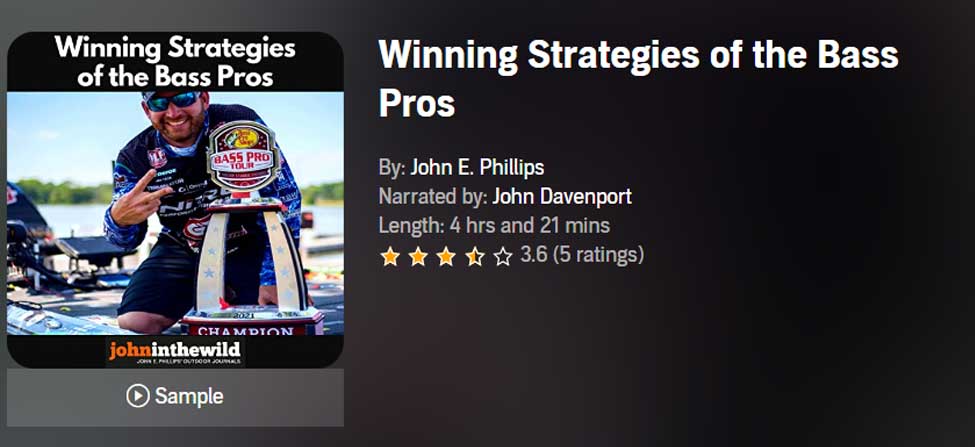
Winning Strategies of the Bass Pros
I learned many years ago if you want to be the best you can be, then you need to learn from the best – particularly when you want to be the best bass fisherman possible. That’s why I’ve written Winning Strategies of the Bass Pros about 11 top bassers.
If you’re wondering at what age you can start learning about bass fishing, you’ll see in the first two chapters about two young men who have come up through the ranks of collegiate bass tournaments – Jordan Lee, who won the Bassmaster Classic in 2017, and Dustin Connell, who won $100,000 in a B.A.S.S. Elite Series tournament in Mississippi in 2017. Top-name pros on both the B.A.S.S. circuit and the FLW circuit are in this book, including Kevin VanDam, Jay Yelas, George Cochran, Rick Clunn, Larry Nixon, Woo Daves, Randy Howell, Scott Canterbury, and Gary Klein.
VERSIONS: AUDIBLE, KINDLE & PRINT
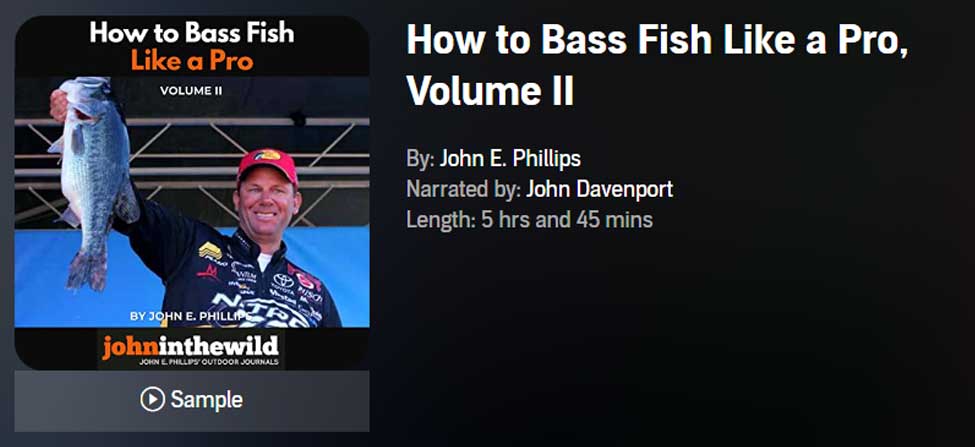
In How to Bass Fish Like a Pro, Volume II, you’ll learn tips and tactics from 21+ Bassmaster Classic winners, two Major League Fishing champions, and 20+ Bassmaster Anglers of the Year about some of the dramatic changes in bass fishing, like:
Depth Finders: You need the latest and greatest depth finders available, since they’re the brains of a bass boat with maps, GPS, side scanning, down scanning, and forward scanning features that enable you to see underwater structures and fish 100-feet away with a 360-degree view. Today’s competitive bass anglers may have four or five depth finders located on the consoles and the bows of their boats.
Other Changes in Equipment: Power fishing for bass using heavy line and rods, big baits, and bait-casting reels that resemble winches have given way to finesse fishing and new techniques like fishing the Ned Rig, the Neko Rig, the Chicken Rig, and the Tokyo Rig on spinning tackle and line as small as 6-10 pounds.
The Growth in Youth and College Competitions for Bass: A young person can begin competition fishing as early as the second grade and continue throughout high school. After that, if the competitor qualifies, he/she may win a scholarship to fish on a college team that eventually may lead them to a professional bass-fishing career.
Changes in the Ways Anglers Bass Fish: Many of the most-consistent winners never pick-up their rods to fish during pre-fishing. Instead, they’ll idle across the water, dropping waypoints from their electronics in places where they’ve identified schools of bass holding. These contestants will have at least 50-250 locations, where they’ve pinpointed schools of bass before a tournament starts.
VERSIONS: AUDIBLE, KINDLE & PRINT


